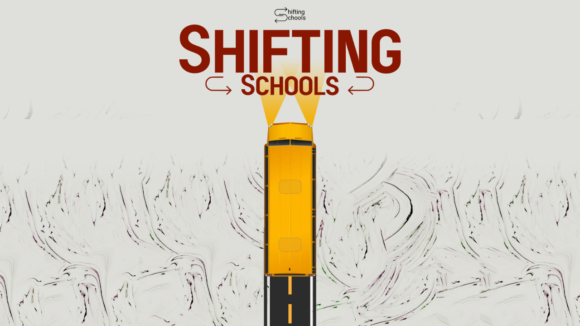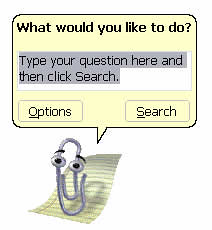
Learning how to learn
On Thursday last week (the first day of school) I met my 6th grade technology class for the first time. After introductions were out of the way. I gave the students a little pretest on Excel. The first program we are going to look at. I asked the students how many of them had experience with Excel and about half raised their hands. Some had done very little just creating basic row and column assignments while others had made charts and used formulas. The pretest was simple. Bold, center, and change the color of some text, Format some numbers in a cell, create a sum formula, etc. I walked around the room and watched as some kids went through the exercise with breeze while others couldn’t do more than center the text. Everyone was at a different level which was fine, but here’s the interesting part. Not one students who was struggling ever click on the help button.
Do these students know how to learn? The answers to all their questions were sitting right in front of them in that little assistant dude they love to click on, play with, and move around the screen. But not one out of my 18 students asked it a question. Why?
 Have we taught kids not to learn on their own? I made it very clear at the beginning that this was just an activity to see what they knew, I even helped some kids find the center button to center their text. They asked each other for help, which I encouraged. They weren’t allowed on the Internet to go find the answers because it was the first day of school and we had just finished going over the Internet Acceptable Use policy that they need to have signed and brought back before they can go online. Some students sat there for 10 minutes just looking around, lost, not knowing what to do or where to go. Now if this would have been a video game I wonder how many would have kept clicking on things until they figured it out, but it wasn’t a video game and they were lost and didn’t know where to turn to for help.
Have we taught kids not to learn on their own? I made it very clear at the beginning that this was just an activity to see what they knew, I even helped some kids find the center button to center their text. They asked each other for help, which I encouraged. They weren’t allowed on the Internet to go find the answers because it was the first day of school and we had just finished going over the Internet Acceptable Use policy that they need to have signed and brought back before they can go online. Some students sat there for 10 minutes just looking around, lost, not knowing what to do or where to go. Now if this would have been a video game I wonder how many would have kept clicking on things until they figured it out, but it wasn’t a video game and they were lost and didn’t know where to turn to for help.
This is a perfect example of what we have been saying, that students need to know how to learn. That could be the best skill I teach them all year. I can’t wait for Monday to come so that I can take this teachable moment and run with it. Monday’s lesson…the little assistant guy does more then put himself in a garbage can!
[tags]learning how to learn[/tags]







What a wonderfully insightful observation. I would be willing to bet a classful of adults wouldn’t have used the “Help Guy” either. I definitely plan to show my students and staff how to use the help. If only the help menu would fix their printers for them. 🙂
I know what you are saying Jeff. It wasn’t always like this in NZ classes but has developed in recent years. Children need to know how to learn but the true learning process with trial and error and so forth is too messy for the objective driven curriculum which we have.
There is some light in the NZ tunnel with a revised curriculum published recently in draft form. Hopefully it will empower creative teachers to inspire children’s learning.
Keep up the great blogging. Love your stories, insights and photos. Hope you have a great year !
Hi Jeff !
I like your description of the lost pupil in the information age. BUT I have seen this phenomenon in different areas amongst my teachning colleagues when confronted with a lot of information. They whant I quick answer where the text is too hard to penetrate for an answer. In that situation they tend to ask a human beeing. The student are not that different when they have too much options.
I think it’s a question of selfesteem where they now that the answer is worth looking for. My second thought is that all knowledge needs some social context. Isn’t there more meeningfull for a student/teacher to learn in a social context then pushing a button to communicate with a boring “Microsoft assistant”. I have been blogging about “Do I need a community yop learn”. Read my blog http://crosslearning.blogspot.com/2006/05/do-i-need-community-to-learn.html
I
Do we “inquire to learn” or “learn to inquire” – is an old tension in the landscapes of eduspeak – I think what your students were dealing with was probably “cognitive overload”
There is a great research article by Clark Kirschner and Sweller looking at inquiry in the context of short term and long term memory – I have a link to the pdf in the “Inquiry as wag the dog pedagogy” post on Artichoke blog
I wonder if the students didn’t think that accessing help was cheating. This was after all a test, and this is the way we’ve been trained to approach tests. With the current exam system testing what knowledge we carry in our heads rather than our ability to collect and aggregate knowledge, it would be an easy assumption to make: you can’t ask the kid at the next desk, you can’t ask the teacher, you can’t use the “help guy”.
Just by the way: when you do Microsoft user proficiency tests for accreditation, you are not allowed to access help – you can therefore only be considered a proficient user if you carry all your user information around in your head. Sad but true.
As a classroom-based trainer for 17 years, I taught several software apps. Whenever anyone asked me to remind them how to do something, I showed them how to use Help to find out for themselves. To my mind it was just a variation on the giving a man a fish/teaching him to catch fish story.
Jeff,
I’m curious to hear some follow-up. How did your students respond when you talked with them about “Help?” Did they mention that they thought they couldn’t access it because it was a test? Or did they genuinely not know how to use F1? How did the teachable moment work?